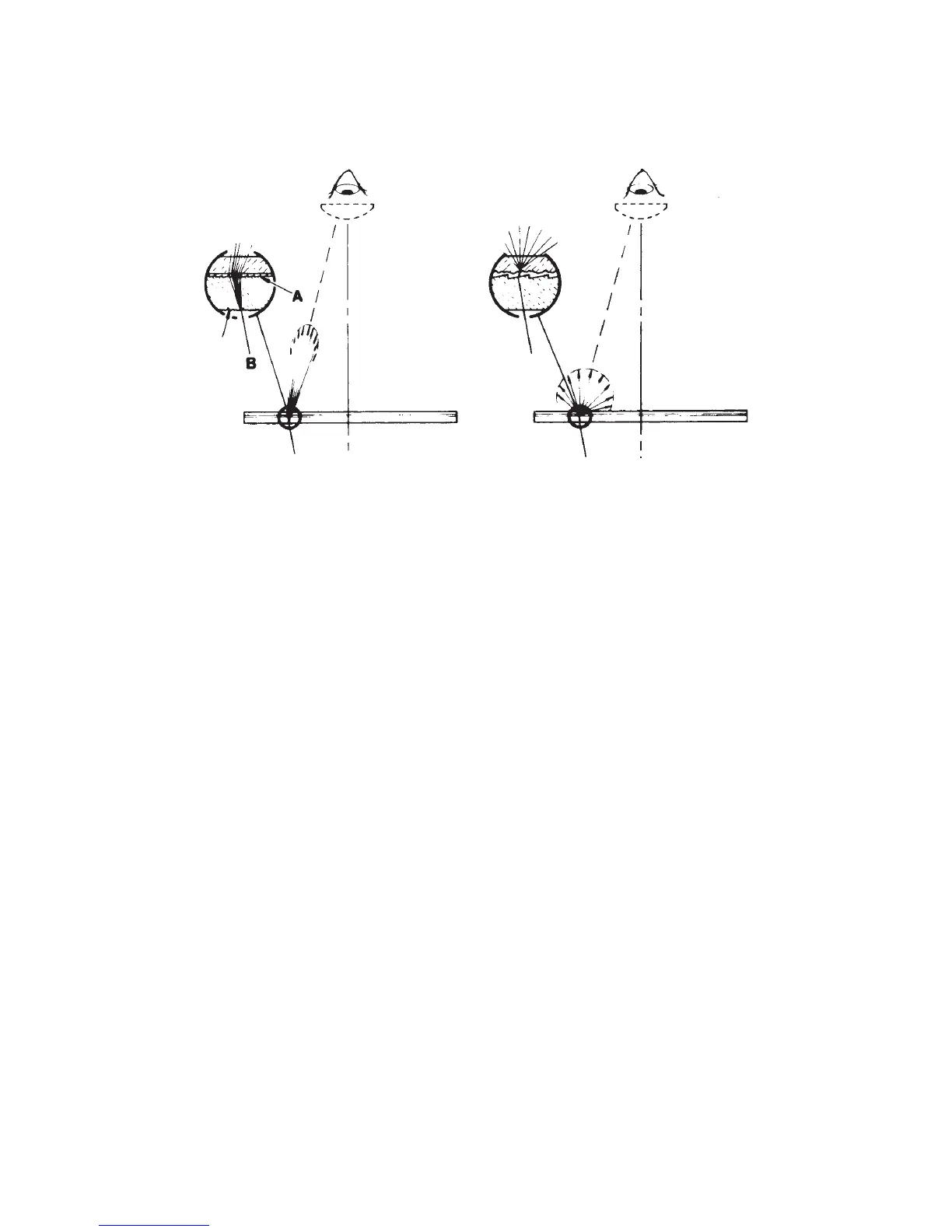Viewfi nders and Focusing Screens 141
Other Focusing Screens
Throughout the Hasselblad history other types of screens have been made for V system cam-
eras some of the more recent ones are shown in Figure 7-3. The screens with grid lines can
be used for 6 4.5 photography as the outer horizontal and vertical lines correspond to this
rectangular format and also to 8 10 paper proportions.
Focusing with Split-Image Rangefi nder
On the Acute Matte screens with split-image rangefi nder the image can be focused either in the
clear rangefi nder center circle or in the surrounding screen area. In the rangefi nder area, the sub-
ject is in focus when a straight line crossing the rangefi nder area appears unbroken across the
dividing center line (see Figure 7-4). Rangefi nder focusing is a good method for photographers
who might have a problem seeing a sharp image in the viewfi nder. Keep in mind that the image
in the rangefi nder area always looks sharp. You must focus on a straight line crossing the split
area and your eye must be in the optical center otherwise one rangefi nder fi eld is blacked out.
Split-image rangefi nder focusing has limitations regarding lens aperture. With lens aper-
tures smaller than f/4 or f/5.6, one side of the split-image rangefi nder fi eld blacks out so the
rangefi nder is no longer usable. This is not a serious limitation, because the lens aperture is
normally wide open when you focus and is f/5.6 or larger on the mostly used lenses.
Cleaning Focusing Screens
Never use lens cleaning fl uids, other chemicals, or water on any focusing screen. Instead,
clean it with a soft cloth, and if necessary, by breathing on it. Never dry it with hot air. Handle
the acrylic screens carefully.
Figure 7-2 The Acute Matte screen. The superb image brightness and contrast of the Acute Matte
focusing screen (left) are achieved with a fi ne Fresnel pattern (A) and a focusing screen plate
composed of microscopic lenses (B). The lenses direct more light toward the eye than an
ordinary focusing screen (right), which diffuses the light in all directions.

